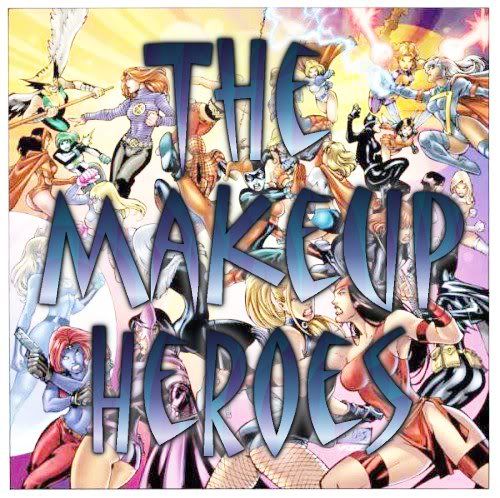“Women’s rights are human rights.”
-Hillary Rodham Clinton
I wanted to write this post last month, but I got caught up in Health Insurance Reform and afterwards I couldn’t write about anything other than singing sparrows and cars that honk orgasms for weeks–I was that depressed. But now I’m back and ready to get my hands dirty once again.
As any reader of this blog knows, my respected friend Tamerlane and I have butted heads over the subject of feminist prehistory on several occasions now, albeit of course in a friendly way. Tamerlane wrote of my last post on the subject (oh yeah, the one that Roseanne Barr linked to on her blog. Mmmhhhmm, that one. Can I get a WHAT WHAT?):
Littleisis, our fellow true liberal and bearer of the Liberal Rapturestandard, writes about an exhibit of prehistoric artifacts which have been interpreted by some to indicate the existence of ancient matriarchal societies. These goddess-worshipping cultures were supposedly peaceful and egalitarian, until being obliterated by invasions of patriarchal, hunter-warrior dudes. Most experts dismiss these theories as fanciful and unsupported by the evidence.Littleisis, our fellow true liberal and bearer of the Liberal Rapturestandard, writes about an exhibit of prehistoric artifacts which have been interpreted by some to indicate the existence of ancient matriarchal societies. These goddess-worshipping cultures were supposedly peaceful and egalitarian, until being obliterated by invasions of patriarchal, hunter-warrior dudes. Most experts dismiss these theories as fanciful and unsupported by the evidence.Pop on over to Liberal Rapture and decide for yourself. Littleisis is a witty writer & an astute observer of politics and culture, and always worth a visit.
Witty though I am, I would like to take a second to remind everyone of who I am: a nineteen-year-old school girl who frankly does not know her ass hole from her belly button about a lot of things. I’m no scholar. In time, I’d like to say I have enough life and academic experience to say I’m half the woman some of the people I blog alongside are. But for now I’m just a hyper little ball of estrogen on legs, and you should keep that in mind when I take enough time out of my life filled with text messaging, shopping, research papers, facebooking, running from the cops and chasing boys (and girls) to rifle through the all the sex, vampires, sparkly penises and make up tips filling up my brian to write down something remotely intelligent or thoughtful.
This however, does not excuse me from the fact that I have yet to fully articulate just what the hell I’m talking about when I write posts about feminist prehistory. I first mentioned it in an article about honor killings and then it just spiraled and got really out of hand. Specifically, I want to quote one of Tamerlane’s commenters Sima, because I agree with her point:
It’s so easy to look at an object and dream about what that object meant to a culture. It’s easy to take mythologies about mythology and assume they represent some sort of ancient, unobtainable being. Historically, goddesses were worshipped, sometimes as heads of pantheons. That doesn’t mean women were well-regarded. The Virgin Mary is one of the most important female icons of the Western World. Her portrait appears everywhere. Her life and deeds are celebrated by many strains of Christianity. She is especially revered by Catholics. And… she exists in the middle of patriarchy. We have little to no idea if pre-historic goddesses reflected women’s power in and over society, or women’s place in society, or both.
[…]
Gimbutas work is important as a possible interpretation of pre-history. It is not the only interpretation, or even the most valid one, at this point. Her work does need to be re-examined periodically as new knowledge and techniques come into being because who knows, she might be right.
I would never make the leap, for example, that just because a society has female diety it is not patriarchal. The Romans had female goddesses as part of their pantheons, and no one would call them egalitarian. Nor would I make a leap that a society has to be peaceful in order to have any kind of gender equality. All though I do believe gender equality, especially in government, permeates peace, because it encourages equality rather than dominance. 
I don’t disagree with Tamerlane and others that there is not sufficient, solid proof that egalitarian cultures like that of the Minoans existed and that theories of feminist prehistory put forward by archeologists like Gimbatus and Eislier are just that: theories. I do however, disagree with the notion that this makes it entirely impobable that such things might possibly be true.
The most recent book I’ve read about this was written in 2007, by Craig Barnes. (Highly recommended. Everyone on Amazon gives it five stars.) Regarding the theory of “hunter warrior dudes” as Tamerlane puts it, he explains:
…among these scholars, including Joseph Campbell, a tradition that war-like nomads had swept down from the steps of Asia bringing patriarchy and oppression and that the origins of misogyny were from these nomads. A furious intellectual debate then raged through the 1990s over the issue of who these nomads were, why they had not left more evidence, what language they spoke, where their pots and houses were. In the end, many modern scholars, including many women, turned to critique Campbell and Gimbatus and the so-called nomad theory. In addition, when the evidence was insufficient to establish these nomadic invasions in a certain time and place or to establish whether they were outsiders or insiders, the critics began to disparage not only the Campbell-Gimbatus theory of invasions but also the whole of the “goddess movement.” Critics disparaged the idea that there ever had been a universal Mother Earth Goddess or that there had ever been a peaceful society or that there had ever been anything like nomadic invasions that caused a change to patriarchy. They argued, with substantial justification, that there had never had never been proof of matriarchy or a universal goddess in western European history. With less justification, however, they went beyond these reasonable questions about nomads and a universal Earth Mother goddess to dispute whether women had ever been more prominent in Western culture and whether some pre-greek societies were women centered, or egalitarian, or peaceful. As a result, scholarship has since settled back into a comfort zone with it’s time honored patriarchal conclusions.
Barnes doesn’t make the case that society became patriarchal and war like because of hunter warrior nomad types from Asia that invaded and raped, killed and took over Goddess-centered societies, regardless of whether that theory is true or not. He does make the case that people are not war-like by nature. I believe that also but my personal belief that human beings are basically good, personally responsible and fully in charge of their own destinies rather than hopelessly condemned and entrenched in original sin–totally controlled by the whims of of an evil satan monster who lives underground and makes them do bad things is just that. Personal.
What Barnes does say is that while war can be effective in changing society, it is consciousness that moves it to change the most. The American Revolution, for example, started way before the battle of Lexington and Concord. It started with an idea that turned into a shot heard ’round the world. And the same can be said of any time in human history.
A few thousand years ago, Homer wrote the Odyssey and The Iliad around the same time the Hebrews wrote the Old Testament, both of which are highly patriarchal and violent and both of which are taught to young children as guidelines to having upstanding moral values, for some reason.
There is strong evidence that society was not originally patriarchal, but that is not what is important. What is important is what is right in front of us, right now. As I said before, one needs to merely pick up a history book and they’ll know that Patriarchy is simply not beneficial to human evolution. Whenever, as SOD calls it, social dominance takes a back seat to some kind of equality, we as human beings improve.
Hunter warrior dudes or not, we can assume that society was at one time egalitarian and is capable of being egalitarian because history tells us so. Women have been involved in every single positive change in modern history. Civil rights, gay rights, abolition, et cetera. Countries like Finland and Iceland, whose governments are fairly gender equal have better health care, better economies and do not constantly involve themselves in the conflicts of other nations. As flawed and ridiculous as we human beings can often be, facts just show that we can’t have come as far as we have by doing the same thing over and over again. That is the definition of insanity and insanity destroys itself from the inside out.
And when I say human beings, I mean all human beings, male or female. Tamerlane and I are in agreement that some people who do appear to believe in the nomad theory do try to use it as evidence that men are by nature inferior and predispositioned to violence, stupidity and war while women are docile and motherly and rely on right brain thinking rather than logic. That is not only bull shit, it is frankly sexist. Equality is acknowledgement that the only differences between men and women are biological. Like in Sally Potter’s Orlando. “Same person, just a different sex.” And I do feel sorry for Tamerlane, seeing as how he was attacked by women who apparently had that ridiculous attitude.
Either way, I am moving forward. As I said before, this information is relevant and no, it does not embarrass feminists. As our shero said,
“There cannot be true democracy unless women’s voices are heard. There cannot be true democracy unless women are given the opportunity to take responsibility for their own lives. There cannot be true democracy unless all citizens are able to participate fully in the lives of their country.“
You tell ’em, Hillary.
Filed under: Hillary Clinton, Minoan Culture, Partying, Prebiblical egalitarianism, Religion, the American Dream | Tagged: Feminist Prehistory |



















Glad to see you back in the saddle!
You might find interesting John Keegan’s A History of Warfare
A concise and stimulating read. Keegan delves deep into our primitive, warring past. His hypothesis is that we are combative and conflict-prone by nature, but all-out war is a later development (birthplace: ancient Greece.)
Your contention that “we can assume that society was at one time egalitarian and is capable of being egalitarian because history tells us so. Women have been involved in every single positive change in modern history. Civil rights, gay rights, abolition, et cetera” is flimsy. I don’t see how one can extrapolate from the admittedly critical role women have played in social change, to some putative prehistoric utopia.
As you concede, there is no convincing evidence whatsoever that such a society existed. (My guess is, you’d have to go back 30-40,000 years to find one.) It is, of course *possible*, and if new evidence shows up, we’ll revise our assumptions. But so long as no evidence exists, we ought to assume there was no such place.
You correctly point out (ht/ Hillary) the uniformly positive correlation between women’s rights and overall human rights, prosperity, liberty. Equality benefits us all equally.
Why does the theory that there may have been peaceful, egalitarian societies in pre-history, societies where women were honoured–cause such umbrage, I wonder? There are many cultures in the world, vastly different from each other. Yet, just as Riane Eisler points out–all over the world, no matter how different they may appear–most come down two being one of two different kinds of societies.
These are androcratic societies, characterized by patriarchal rule, rule from the top down and a militarist ideology. And then there are gylanic societies, characterized by, at the very least, recognition of the humanity of women, rule by consensus and a tendency to view war as a last resort. And whether people like it or not, there is powerful evidence that Minoan culture appears to have been a female friendly, gylanic society. Time and again, in their glorious, detailed murals, they portray women in positions of clear authority–they appear to have been sea captains, as well as priestesses.
And there IS evidence that they were sheltered from war for centuries. Certainly their art work is markedly different from other ancient art work, in that it is characterised by a distinct absence of warlike themes. What actually seems to have ended Minoan culture was not so much invaders, as an apocalyptic volcanic eruption in 1650 B.C. the likes of which has never recurred in human history. With their cities and colonies ruined and their numbers decimated, the few surviving Minoans were easy prey to invaders. We haven’t decoded the Minoan language, which would tell us more, but it is irrational to deliberately ignore the compelling evidence that we do have, that these creative people, who built the first cities in Europe, were, at the very least, a gentle and life loving people, whose women seemed to have played a prominent part in the ethos of their culture.
Thanks Karen. I think there are those that find evidence of gylanic society threatening because obviously it interferes with the status quo. If people are actually decent and egalitarian by nature, those in power are exposed as unnecessary to our survival. Can’t have that, can we?
Thank you for replying, littleisis. I am new to the internet and stumbled upon your blog–that is the correct term? I read Eisler and Gimbutas too, years ago. I knew critics would froth at the mouth. But Eisler’s theory makes sense. You can see the historical pattern occurring over and over again. You can see that social change, wherein societies become more gylanic–is driven by women every bit as much as by men. In fact, historically, for the change to be real and lasting–like say the rise of Abolitionism–women must be involved. And I don’t think there is anything “flimsy” about such evidence. What I see is a pattern of female participation, and even leadership, in social change, repeated throughout history–that is quickly disparaged, covered up, hidden or derided by apologists for androcracy.
A compelling example of this cover up is found in the history of the early Christians. From the very beginning, Christianity was a movement driven in no small part, by female converts. And in the beginning, women seem to have enjoyed equality with male Christians. In the catacombs, wall murals clearly depict women saying Mass. It took decades, even centuries, and the concerted efforts of St Paul and other self-appointed guardians of Christian dogma, to reduce women to the status of second class believers who must “keep silent in the churches.” I don’t believe in utopias, prehistoric or otherwise–but nor do I believe the cock and bull story of inevitable male dominance and inevitable, eternal warfare, fed to us by conservative commentators.
купить fallout new vegas >>>>>>>>>> http://bit.ly/2S0skSE
world of tanks buy account cheap >>>>> http://bit.ly/2Piyayp
click to investigate https://crypto-mining.club/en/mining/download-awesome-miner-v7-1-6-crack-nvidia-amd-miner/